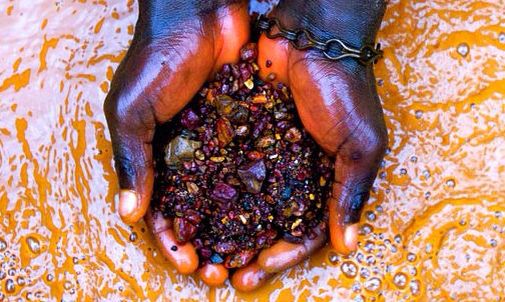When people think of Angola’s independence struggle, what often comes to mind are decades of conflict, colonial resistance, and Cold War politics, but beneath all that lay two forces that quietly determined the nation’s fate, which was oil and diamonds.
These natural resources didn’t just fund wars, they also defined alliances, drew foreign powers, and ultimately shaped how Angola came out as an independent nation in 1975.
In other words, how oil and diamonds shaped Angola’s path to independence is a story of wealth, power, and exploitation, one that mirrors Africa’s broader postcolonial struggles.
A Rich and Resourced Colony Under Portuguese Control
Before independence, Angola was one of Portugal’s most profitable colonies. The discovery of diamonds in the Mussulala River-Lunda Norte in 1912 and oil off the coast of Cabinda in the 1950s turned Angola into a cornerstone of the Portuguese empire’s economy.
However, this wealth came at a painful cost for the people. The money from Angola’s resources went straight to Portugal in Lisbon, not to the people living in Luanda. Many Angolans were forced to work under a system called contract labour, in which they had to work for private companies for a set period, often far from home. They had no say in their working conditions and were treated very poorly.
This system mainly benefited a few Portuguese settlers and the government, while most Angolans lived in poverty. Workers had almost no rights, faced harsh treatment, and were often paid little or nothing.
The suffering and unfairness caused by this system created deep anger among the people. Over time, that anger and resentment grew into the nationalist movements that fought to free Angola from Portuguese rule.
The Role of Oil in the Independence Struggle
By the 1960s, oil had become Angola’s lifeblood. Companies like Gulf Oil (now Chevron) began large scale exploration in Cabinda, a region separated from the rest of Angola by the Congo River.
When liberation movements like the MPLA (Popular Movement for the Liberation of Angola) emerged, they quickly realised that whoever controlled the oil could finance the revolution.
The MPLA’s early connections with left leaning states such as the Soviet Union and Cuba weren’t just ideological, they were strategic, ensuring access to weapons and financial backing.
Meanwhile, Portugal depended heavily on Angolan oil exports to sustain its fragile post-war economy, making Lisbon reluctant to grant independence. The 1973 oil crisis, however, shifted the global landscape. As oil prices soared, Portugal faced economic instability, weakening its colonial grip.
So, oil didn’t just enrich Angola, it became a weapon that both sides used to push for or resist freedom.
Diamonds and the Funding of Rebellion
While oil bankrolled the government and the MPLA, diamonds funded their rivals. The UNITA (National Union for the Total Independence of Angola), led by Jonas Savimbi, financed its operations through diamond smuggling in the central and eastern regions of Angola.
This competition over resources created a power struggle that lasted long after 1975. The so called blood diamonds of Angola were not only exchanged for weapons but also used to buy political influence during the civil war that followed independence.
Even before official independence, these diamonds allowed rebel groups to sustain long campaigns against both Portuguese troops and rival factions, making them an essential part of how oil and diamonds shaped Angola’s path to independence.
The Intersection of Wealth and War
As Angola neared independence, the country was caught in a storm of greed and global politics. The Cold War turned Angola into a battleground for superpowers. The MPLA, supported by the Soviet Union and Cuba, and UNITA, backed by the United States and South Africa, used Angola’s oil and diamonds to strengthen their power.
On November 11, 1975, the MPLA declared independence in Luanda. Angola had plenty of resources, but it lacked unity. Instead of bringing the country together, its wealth widened divisions.
Oil was mostly in the north and west, while diamonds were in the east and south. This economic divide reflected the political one: the MPLA controlled the cities, and UNITA controlled the countryside. These splits fueled nearly 30 years of civil war.
After independence, oil became the backbone of Angola’s reconstruction. By the 1990s, oil accounted for over 90% of Angola’s exports, making it one of sub-Saharan Africa’s top oil producers.
Meanwhile, diamonds continued to play a dual role, rebuilding the economy while also fueling black market corruption. The Kimberley Process Certification Scheme, launched in 2003, helped reduce the trade in conflict diamonds, but smuggling and mismanagement persisted.
Today, Angola’s oil wealth has transformed Luanda into one of Africa’s most expensive cities. Yet, much of the population still faces poverty, a stark reminder that the very resources that secured independence have not guaranteed equality.
CONCLUSION
Oil and diamonds funded armed movements, drew international support, and created both opportunities and challenges that shaped the nation’s path to independence in 1975. The MPLA’s access to oil and UNITA’s control of diamonds determined who could fight, who could survive, and ultimately who would govern.
Today, these same resources continue to define Angola’s economy and politics. Understanding how oil and diamonds shaped Angola’s path to independence offers insight into the complex relationship between natural wealth, colonial power, and the struggle for self-determination, which are lessons that resonate across Africa’s postcolonial history.

